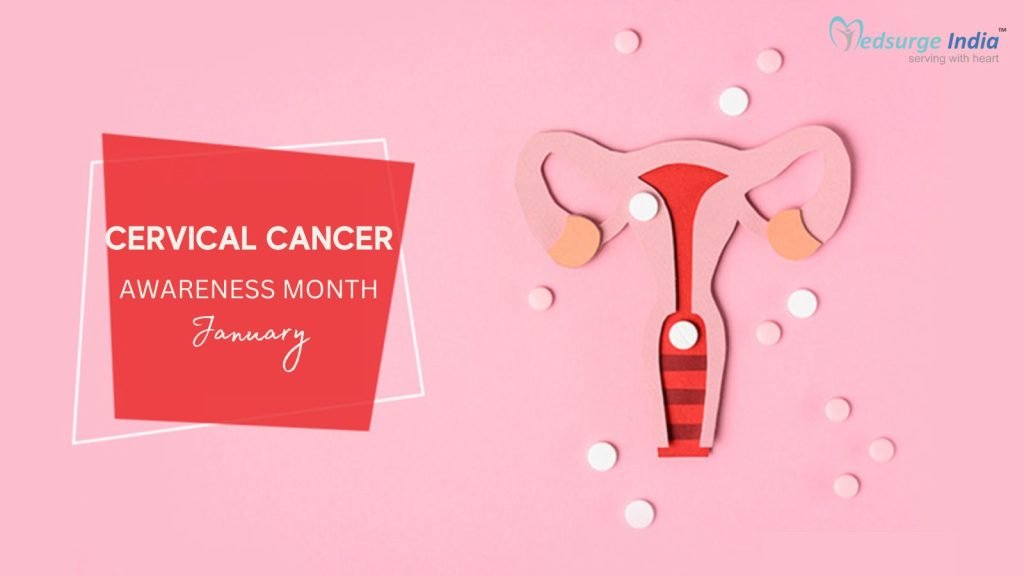
A teal ribbon is displayed in January to mark Cervical Cancer Awareness Month. According to the World Health Organization, cervical cancer is the second most common cancer death among reproductive-aged women worldwide, while it is also the fourth most frequent type of cancer in women.
One of the main strategies for eliminating cervical cancer is to increase screening and preventative measures. Most cases of the condition are caused by human papillomavirus (HPV) infection, so vaccines that protect against it could significantly reduce their incidence. Regular Pap tests can also detect the condition in its precancerous stage, which can then be treated.
Cervical cancer is one of several malignancies that can be caused by pathogen infections, which include bacteria, viruses, and parasites.
The health of the cervical region is one aspect of health that many women neglect throughout their lives. As women become more aware of this, they have a better chance of detecting any health issues and receiving treatments at the earliest possible time.
Cervical Cancer: What is it?
Cervical cancer develops when cancer cells originate in the cervix, the lowest section of the uterus that attaches to the vagina.
Human papillomavirus (HPV), a sexually transmitted infection, is generally responsible for cervical cancer. Thanks to safe and efficient HPV vaccinations, the majority of occurrences of cervical cancer can be prevented in addition to providing protection against the virus.
If the virus remains in the body for several years, it contributes to the process by which some cervical cells develop into cancer cells, leading to the development of cervical cancer.
Types of Cervical Cancer
- Cervical cancers are identified based on how they appear under a microscope in the lab. Adenocarcinoma and Squamous cell carcinoma are the two most common forms of cervical cancer.
- Squamous cell carcinomas make up the majority of cervical malignancies (up to 9 out of 10). Exocervical cells give rise to these malignancies. The transformation zone is where squamous cell carcinomas most frequently start (where the exocervix joins the endocervix).
- Adenocarcinomas make up the majority of the other cervical malignancies. The malignancies known as adenocarcinomas originate from glandular cells. The endocervical gland cells that produce mucus give rise to cervical cancer.
- Less frequently, cervical malignancies resemble squamous cell carcinomas and adenocarcinomas in their characteristics. Adenosquamous carcinomas or mixed carcinomas are the names given to them.
- Although squamous cell carcinomas and adenocarcinomas account for the majority of cervical malignancies, other cancers can also form in the cervix. Other forms of cancer, such as melanoma, sarcoma, and lymphoma, are more frequent in other regions of the body.
How to Lower My Chance of Cervical Cancer
Regular screenings using Pap tests and human papillomavirus (HPV) testing to identify any precancers and cure them can frequently avoid cervical cancer. Additionally, it can be avoided by getting the HPV vaccine.
All teenagers should receive the HPV vaccine as part of their normal vaccinations in order to help prevent cervical cancer. Starting at age 9, it can be administered. The right vaccination schedule may vary depending on a number of variables, including age, gender, and vaccine availability, so speak with your doctor about it.
People can also do the following additional things to help avoid cervical cancer:
- Limiting the number of partners in sexual activity
- Engaging in safer sexual activity by using condoms
- Putting off having a first date till your late teens or later
- Giving up smoking
How is Cervical Cancer Treated?
A gynecologic oncologist is part of the cervical cancer treatment team (a doctor who specialises in cancers of female reproductive organs). Treatment for cervical cancer in India is based on a variety of factors, including the stage of the disease, your age and general health, and whether or not you intend to have children in the future.
The following treatment options can be done recommended by the oncologist:
- Radiation Therapy
- Chemotherapy
- Surgery
- Targeted Drug Therapy
- Immunotherapy
To know more in detail about Cervical Cancer Treatment in India, click on the link https://medsurgeindia.com/cost/cervical-cancer-treatment-cost-in-india/
Cervical Cancer can be Fully Cured!
Depending on the individual’s characteristics and particular requirements, many treatment approaches are available for treating cervical cancer. Treatments often focus on minimizing painful episodes, symptom relief, and avoiding consequences.
Three vaccinations, Gardasil, Gardasil 9, and Cervarix, have been licensed by the U.S. Food and Drug Administration (FDA) to prevent infection with certain subtypes of HPV, including 16 and 18, two high-risk HPVs that are responsible for over 70% of cervical malignancies.
Making the correct treatment choice for you might be challenging. Discuss the treatment choices with your oncologist based on the kind and stage of your cancer. The risks, advantages, and side effects of each treatment may be discussed with your doctor.
In some cases, patients seek the opinions of multiple cancer specialists. By getting a second opinion, you might be able to select the right course of treatment
Suggestion
People seeking treatment can come to us as we are organizing a cancer consultation camp in Nigeria to raise awareness about advanced cancer treatments in India. To know more in detail about the Camp, do click on https://medsurgeindia.com/nigeriacamp/








